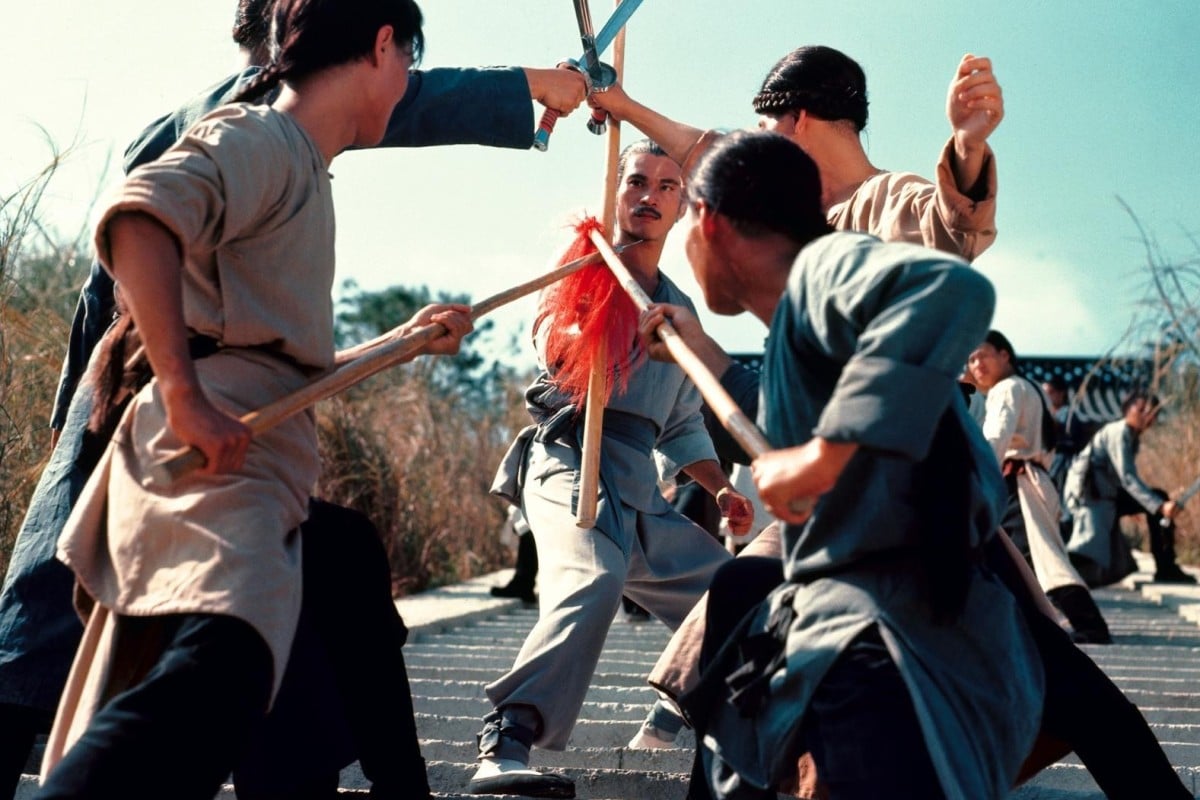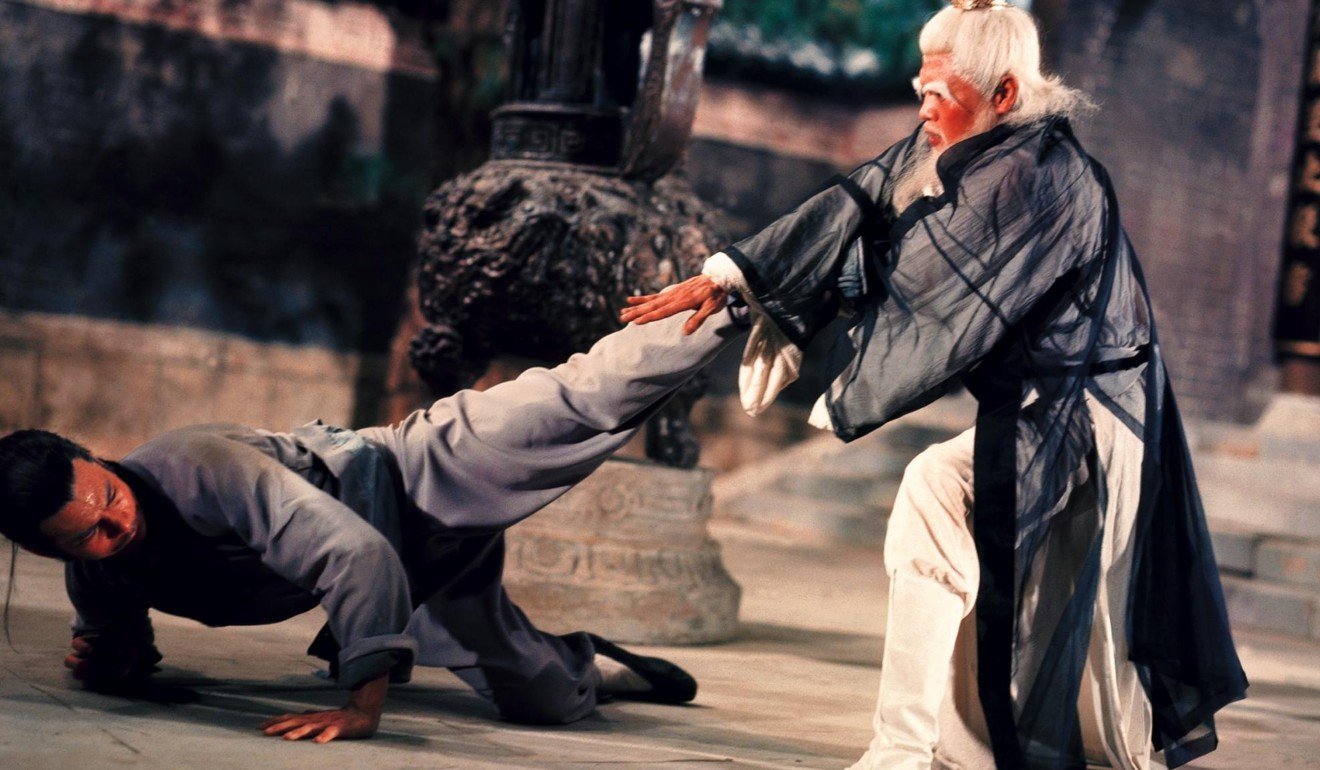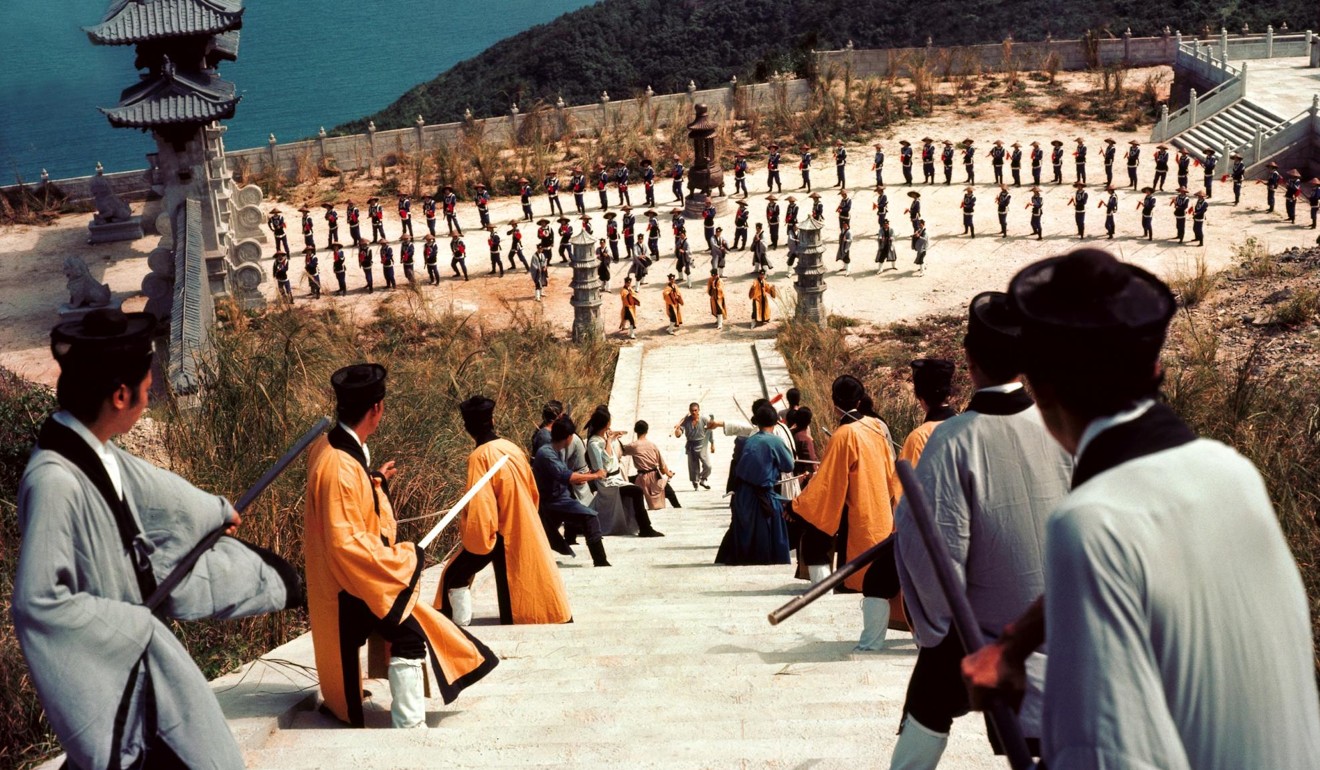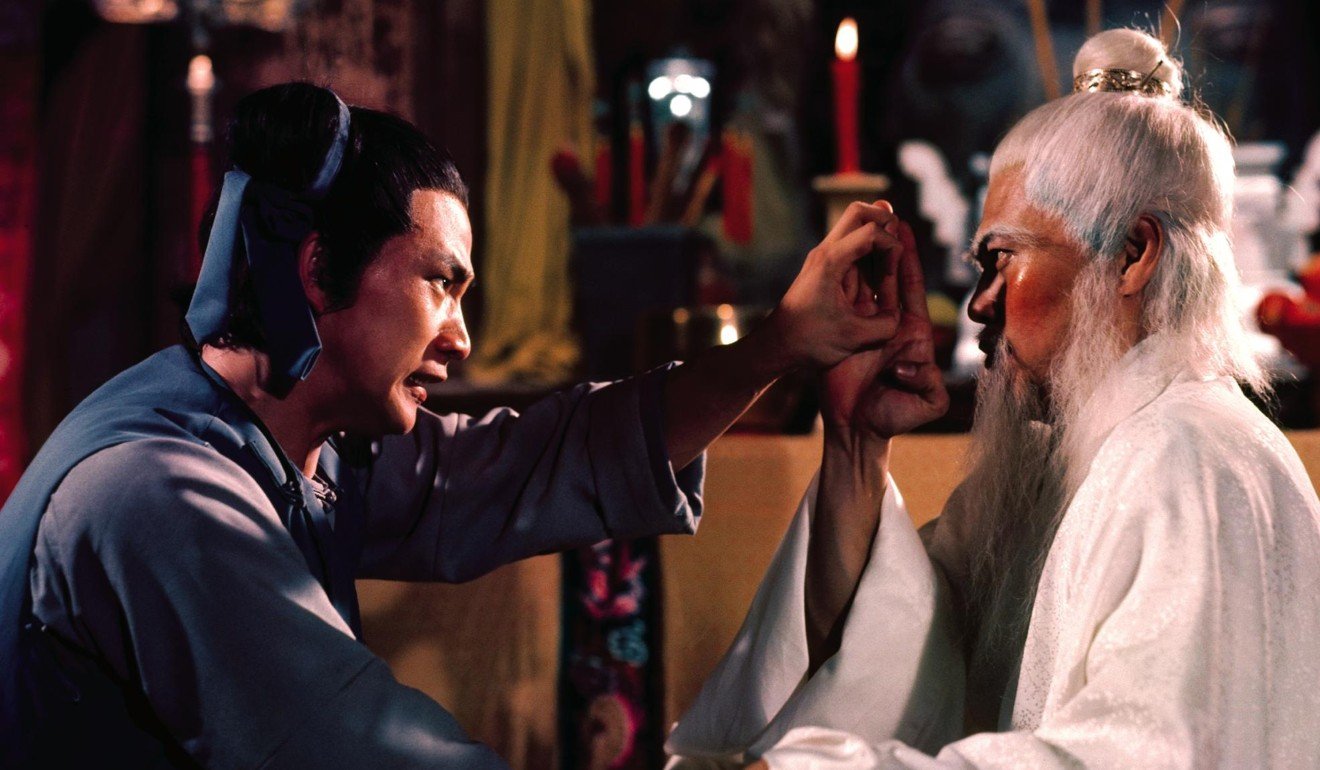
The first martial arts movie to emphasise the role of the family unit in the martial arts world, and the first to integrate sexuality and gender with kung fu practice and philosophy, Executioners from Shaolin is a rip-roaring adventure with a big storyline that expertly fleshes out the characters between masterful bouts of kung fu.
The 1977 Shaw Brothers production directed by master Hong Kong filmmaker Lau Kar-leung – also known as Liu Chia-liang – showcased the Tiger Claw and White Crane styles of Shaolin kung fu in clear and exemplary fashion.
All martial arts spring from Shaolin, the saying goes, and that’s where Executioners from Shaolin begins, too. After the burning of the southern Shaolin monastery – unlike its northern counterpart, probably an apocryphal institution – by the Manchus, who considered it seditious, a small band of monks escape and vow revenge on Pai Mei (played by veteran villain Lo Lieh), the traitor who killed their abbot.
Led by Hong Xi Guan (Chen Kuan-tai), the men first join the Red Boat, a vessel which traversed China spreading anti-government sentiment while putting on Peking opera performances. During a stop at a village, Xi Guan meets the feisty Fang Yung-chun (Lily Li Li-li, at the height of her fame) and is impressed by her skill at White Crane-style kung fu.
The two marry and have a child, Hong Wen Ding (Wong Yu). While Xi Guan studies Tiger Claw kung fu to defeat Pai Mei, the cheeky Wen Ding – who wears his hair in girly braids – grows up into an effeminate young man who is nonetheless skilled in his mother’s White Crane kung fu techniques. After Xi Guan is killed by Pai Mei while trying to avenge his master, Wen Ding realises that the way to beat him is to combine Tiger Claw and White Crane kung fu.
Executioners from Shaolin addresses Lau’s recurring theme of the handing down of martial skills through generations, but it’s unique among martial arts films for its portrayal of the family unit as a source of both emotional and physical strength. Only when the son unites the different skills of the mother and father – in the process, making a new kung fu style – does he achieve the power to defeat evil.

“The family is the nexus of all Lau’s work,” wrote critic Roger Garcia in his seminal 1980 essay on Lau, The Autarkic World of Lau Kar-leung. “Martial arts is a family of styles, related like brothers or distant cousins by essentially springing from the same source, the Shaolin Monastery. In the same way, kung fu schools are family units where all pupils are like brothers presided over by the paternalistic master,” said Garcia.
“The cinema is also a family,” noted Garcia. “From the corporate status and identity of Shaw Bros, through the genre of the martial arts film, to Lau’s use of his brother Lau Kar-wing, and his mother’s godson [Gordon] Liu Chia-hui in his films.”
That sexuality as a theme in Executioners from Shaolin is perhaps its most fascinating aspect. A pre-credits sequence shows a fight between Pai Mei and the Shaolin Monastery’s abbot, Zhi Shan, which takes place against a red screen, outside the film’s narrative. Zhi Shan tries to grab Pai Mei’s weak point – his crotch – but finds nothing there to hold on to.

Pai Mei has mastered a technique which allows him to grab and lock an attacker’s fist in his crotch when he strikes at it, and it’s this move that he uses to defeat Zhi Shan and, later, Xi Guan.
But Wen Ding, who is effeminate but strong, and equally skilled in the White Crane kung fu style of his mother and the Tiger Claw style of his father, is able to beat Pai Mei. The correct balance of yin and yang, according to Taoist principles, along with potent sexual force, is able to overcome the strength of the impotent and asexual Pai Mei.
Hong Xi Guan is loosely based on a real person, Hong Xiguan (1745 to 1825), a martial arts teacher who developed the popular Cantonese fighting style of Hung Ga. But the film’s powerful choreography – orchestrated by Lau himself – mainly highlights the Tiger Claw and White Crane styles of kung fu.

There is a Hung Ga style that combines Tiger Claw and White Crane kung fu, but the two have distinct histories. White Crane style, which was developed in the 17th century by observing the white crane bird, mimics the pecking attacks of a crane and the defensive manoeuvres of its wings. On film, it’s often used to show elongated, long-distance forms of attack.
Tiger Claw exponents mimic the claws of a tiger with their fingers and try to hit their opponent’s vital points. As in Executioners from Shaolin, those using Tiger Claw to attack will sometimes try to hit their adversary’s groin.
The way that Wen Ding combines and adapts the two styles – leading his enemy Pai Mei to exclaim, “What is this style of kung fu?” – could be a reference to Bruce Lee, who broke with martial arts tradition to merge styles in his Jeet Kune Do way of fighting.

In this regular feature series on the best of Hong Kong martial arts cinema, we examine the legacy of classic films, re-evaluate the careers of its greatest stars, and revisit some of the lesser-known aspects of the genre.
Want more articles like this? Follow SCMP Film on Facebook







